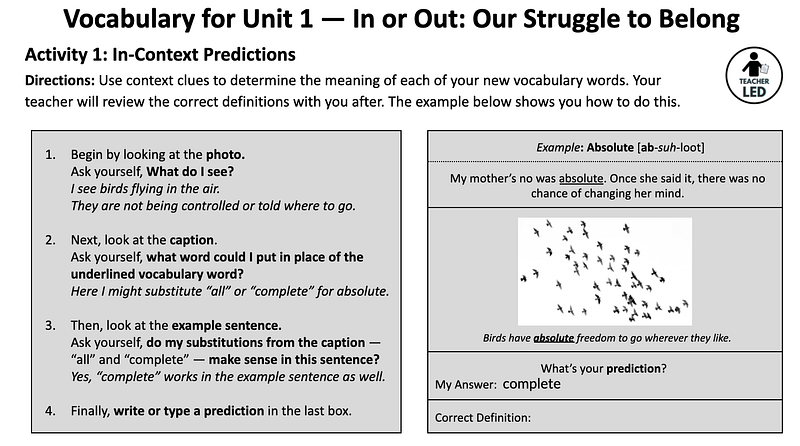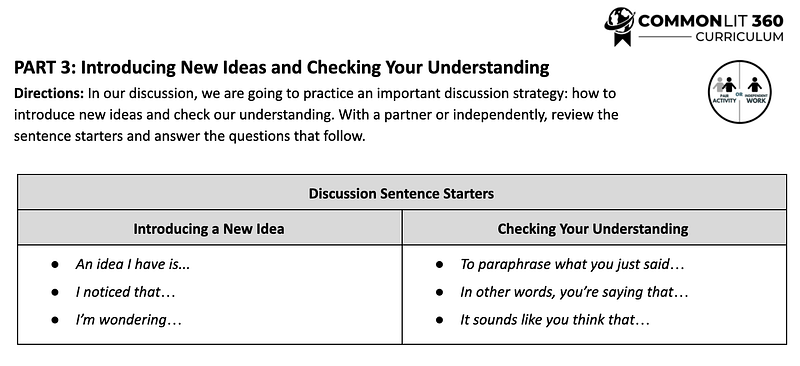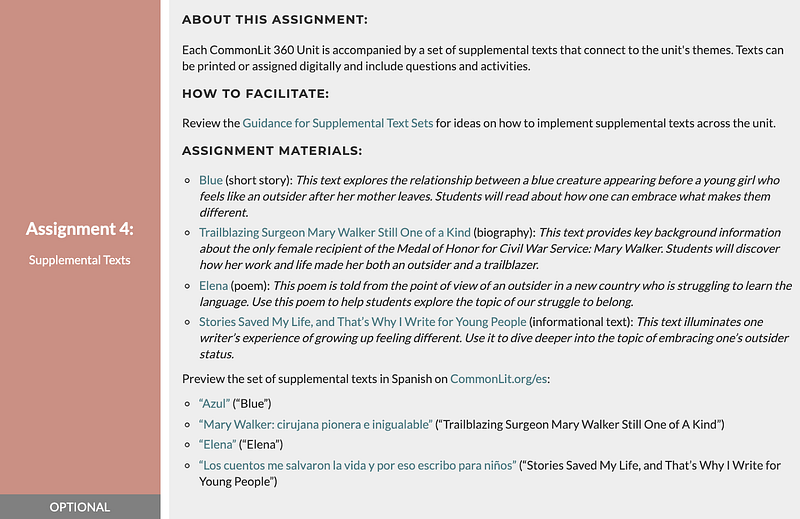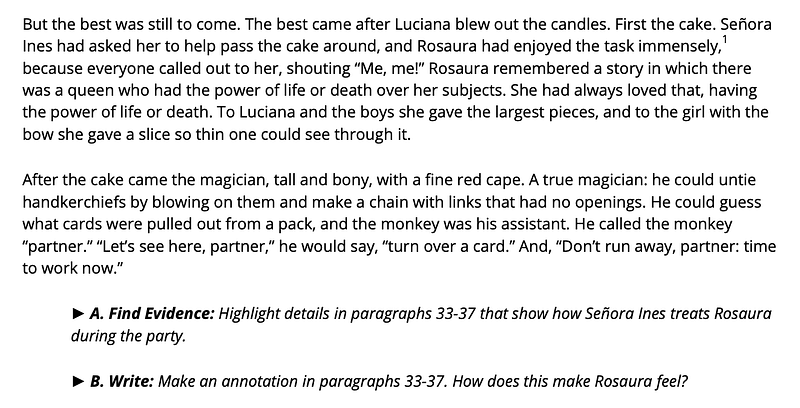CommonLit’s free curriculum for grades 6–12 supports English Language Learners with explicit vocabulary instruction, scaffolded comprehension and accessibility tools, and differentiated lesson options — all with an inclusion lens.
CommonLit 360 is a comprehensive curriculum for grades 6–12, freely available to teachers and students through CommonLit.org. In keeping with our commitment to close persistent opportunity gaps, the digital literacy program we created is designed to maximize inclusive learning for students whose first language isn’t English.
CommonLit’s free teaching materials support reading intervention strategies for struggling ELL students. Here are 5 ways that CommonLit 360 supports inclusion and differentiation for English Language Learners:
1) All units include explicit instruction in academic vocabulary to build word knowledge, tied to unit content.
Research tells us that one of the most effective pedagogical strategies to support ELLs is to develop their vocabularies. Explicit vocabulary instruction has been shown to have a positive effect (Lesaux, 2012). That’s why every CommonLit 360 unit comes with a set of five vocabulary activities that instruct students on 7–10 high-quality academic vocabulary words that they will experience throughout the unit in stories, questions, and writing and discussion prompts. Students get multiple exposures to these words, and complete a short vocabulary quiz to assess word retention.

2) Materials emphasize oral language, listening, and speaking — with an inclusion focus.
Reading, writing, and speaking are inextricably linked. And to build confidence with language, English Language Learners need to be in a supportive environment where they can feel safe to practice their oral language skills. CommonLit 360 materials are designed to get students talking, and include many supportive materials and prompts to help teachers build a language-rich classroom environment with strong norms and routines for speaking and listening. In every 360 unit, students answer questions orally through “Think & Shares” and “Turn & Talks,” work collaboratively with partners in Related Media Explorations and Partner Discussions, and participate in 1–2 classroom discussions during a unit. Students also receive direct instruction in how to listen to their peers and respond in a productive way to move the discourse forward. Discussion protocols for students allow them plenty of thinking and planning time to reflect on their own speaking and listening skills. To support inclusive discussion, an easy-to-use voice tracker is also included.

3) Units include supplemental texts in Spanish that can be used flexibly to differentiate.
Research tells us that background knowledge is key when it comes to building student reading comprehension. And with background knowledge, success begets success; the more you know, the easier it is to read, and as reading becomes easier, the more you’re able to learn. CommonLit 360 units are designed around engaging topics, themes, and research questions to build this kind of momentum. To learn more about the skills and topics covered in each unit, access the Curriculum Overview document.
One resource to promote the development of background knowledge is a set of informational and literary texts. Every unit comes with a set of supplemental texts at a variety of levels that connect to the unit’s themes, and can be flexibly used to differentiate instruction.
To support native Spanish speakers specifically, CommonLit provides many of these supplemental texts in both English and Spanish. Teachers can also tap into CommonLit Español, a library of over 600 supplemental texts in Spanish that can be used for supportive group reading, remediation, extension activities, and more.

4) Scaffolded questioning supports reading comprehension.
The heart of every CommonLit 360 unit are the reading lessons. These lessons anchor the instruction in the unit. Students write about what they read, and have discussions to draw out the deeper meanings in the texts. The texts in the CommonLit curriculum are grade-level aligned. To build the comprehension development, all reading passages include a set of scaffolded questions with guided reading support. These questions prompt students to go back to the text to find evidence, synthesize key paragraphs or sections, and draw conclusions based on what they’ve read so far. These questions will help give teachers a “pulse check” of whether students are comprehending, and also help students articulate and clarify their thinking while they read.

5) Digital accessibility tools like read aloud and translate provide a supportive user experience to ELLs.
CommonLit 360 also comes with a suite of supportive technology. Students can use the read aloud feature to listen to any chunk of text read aloud, including questions. A translation feature is also available to students, and provides on-click translation into over 30 different languages, including Spanish, French, Arabic, Mandarin, Urdu, Hindi, and more.
Next Steps
If you are interested in learning more about how vocabulary and other integral language arts skills are addressed within the brand new CommonLit 360 units, here are some recommended next steps:
- Browse the 360 Curriculum here.
- Sign up for a CommonLit 360 webinar for an opportunity to learn more and ask questions.Learn about the affordable wraparound services for schools and districts looking to adopt CommonLit 360.


